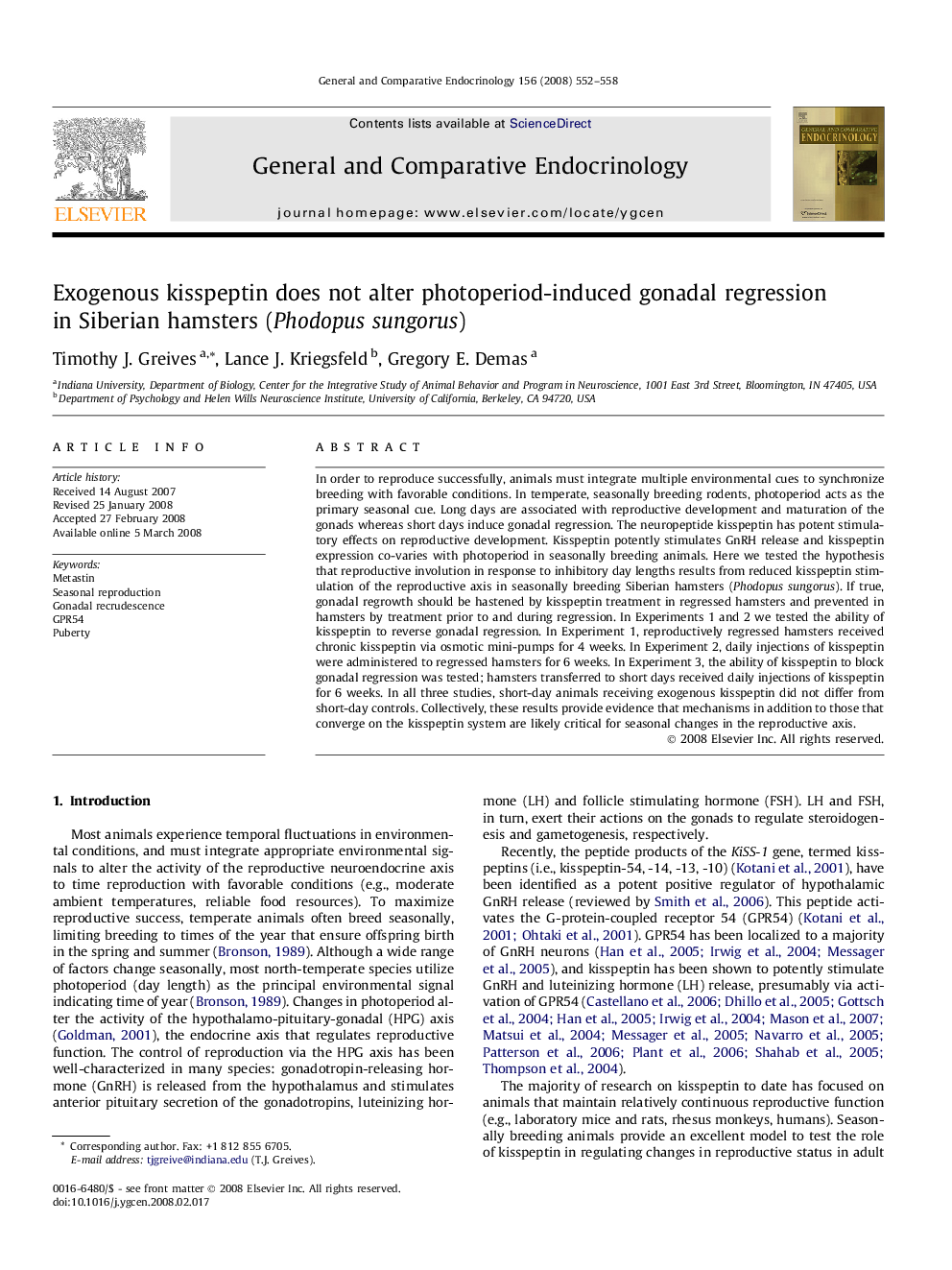| Article ID | Journal | Published Year | Pages | File Type |
|---|---|---|---|---|
| 2801917 | General and Comparative Endocrinology | 2008 | 7 Pages |
In order to reproduce successfully, animals must integrate multiple environmental cues to synchronize breeding with favorable conditions. In temperate, seasonally breeding rodents, photoperiod acts as the primary seasonal cue. Long days are associated with reproductive development and maturation of the gonads whereas short days induce gonadal regression. The neuropeptide kisspeptin has potent stimulatory effects on reproductive development. Kisspeptin potently stimulates GnRH release and kisspeptin expression co-varies with photoperiod in seasonally breeding animals. Here we tested the hypothesis that reproductive involution in response to inhibitory day lengths results from reduced kisspeptin stimulation of the reproductive axis in seasonally breeding Siberian hamsters (Phodopus sungorus). If true, gonadal regrowth should be hastened by kisspeptin treatment in regressed hamsters and prevented in hamsters by treatment prior to and during regression. In Experiments 1 and 2 we tested the ability of kisspeptin to reverse gonadal regression. In Experiment 1, reproductively regressed hamsters received chronic kisspeptin via osmotic mini-pumps for 4 weeks. In Experiment 2, daily injections of kisspeptin were administered to regressed hamsters for 6 weeks. In Experiment 3, the ability of kisspeptin to block gonadal regression was tested; hamsters transferred to short days received daily injections of kisspeptin for 6 weeks. In all three studies, short-day animals receiving exogenous kisspeptin did not differ from short-day controls. Collectively, these results provide evidence that mechanisms in addition to those that converge on the kisspeptin system are likely critical for seasonal changes in the reproductive axis.
